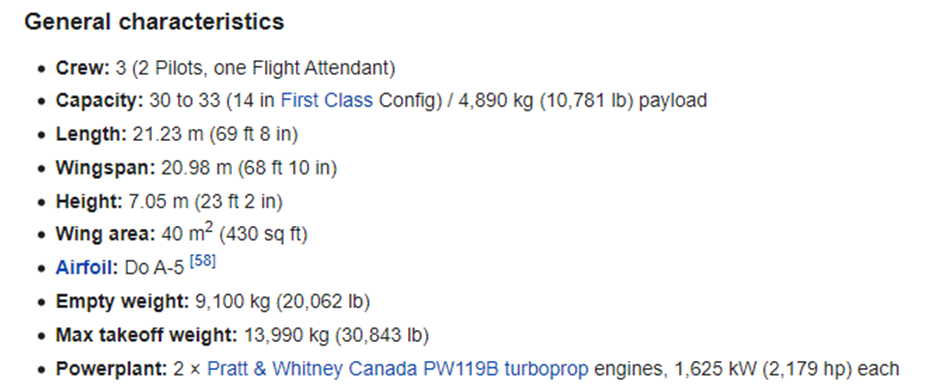How HAL Missed the Trick by NOT Going for Do 328, Do 428, Do 528, Do 728

It seems HAL missed a trick or 2 by not going in for Do 328, Do 428 and Do 728 family after going in for Do 228. HAL to date has produced more than 125 Do 228s and as now developed H 228 which is the civilian transport-certified version of the 19-seater Do 228. Logically and ideally speaking HAL should have gone in for the follow on Do 328, Do 428, and Do 728 family. That would have allowed HAL to master and manufacture 30-, 40-, and 60-, 70-seater aircraft by now for use in the civil aviation market. It would have allowed people across India access to low-cost airline flights on low-cost aircraft. I won’t go into Do 228 because it is now well known but talk more about the other Dornier aircraft.
Do 228
Do 328
Do 328 is a stretched version of Do 228. First built by Dornier, then Fairchild-Dornier, and now Sierra Nevada Corporation. If HAL had gone for licensed production of Do 328 which is still in production, not only the Indian Armed Forces but also the regional civilian aircraft market would have benefitted a lot as India literally doesn’t have any 30-seater low-cost aircraft flying in the domestic circuit. Even a jet-powered version of the aircraft called the Do 328 JET for a few years carried the same number of passengers. License production of the aircraft would have been very beneficial for HAL as it would have allowed HAL to gain valuable experience in civil aircraft manufacturing.
Do 428
Dornier 428JET was a program undertaken by Fairchild Dornier
to develop a 44-seat regional jet aircraft as a stretched version of Do 328
albeit the jet-powered version. Its design schematics were ready and even
orders were placed but the program was canceled at the turn of century due to
less demand in the west. But such an aircraft with turboprop engines can be very
beneficial in India as it would have allowed a 44-seater aircraft to connect
many small cities and towns in India, Nepal, Sri Lanka, and Bangladesh allowing the people to
experience low-cost travel. It also could well have had an export market in
Africa and South America. HAL can still try to get its hand on the design
schematics of the aircraft and modify it as per today’s requirements, that way
HAL would have not only gained experience in making a 44-seater but also hold
valuable IPR (Intellectual Property Rights). Really it seems HAL missed a trick
here.
Do 728 Family
HAL missed
the biggest chance and trick when the Fairchild Dornier 728/928 family which was
a series of a jet-powered regional airliner being developed was canceled. The Do
728 family was supposed to have a seating capacity of between 50 and 110 passengers.
All these were stretched versions of the existing Do 328 JET. The 728/928 wanted
to launch the jets by mid-2003 for regional service. A modern design the jet
program was canceled after the insolvency of Fairchild Dornier. The company
had developed 3 prototypes Do 528, Do 728, and Do 928 with the last one having a passenger
capacity of over 90.
These would
have very ideal for India's civilian region and commuter air traffic, and
definitely like the Do 328 and Do 428 definitely have export potential. If HAL
somehow got hold of the design schematics and the actual prototypes, after
making relevant changes HAL would have got itself a huge stash of invaluable
IPRs from these planes. HAL could still get its hand on the designs and work on
them towards developing a 70-to-110-seater regional commuter jet/propeller
plane, something that is still a pipe dream for India, and we have been chasing
it since last 4 decades, but have never been able to get anywhere close to it.
NAL SARAS / SARAS MKII
Many people may say those are foreign designs there is
nothing indigenous about it. As such working on NAL SARAS is a much better
idea. But to me, it is like reinventing the wheel when we already have H 228
with a 19-seater capacity why waste money and effort on SARAS which is not even a
19-seater capacity plane. Also, there is nothing indigenous about it, it’s actually
a Russian design from the late 1970s that was abandoned just like Do
428/528/728/928. It has imported P&W engines and there are many more things imported that have
been fitted into it.
The best idea is to learn from the experience of NAL SARAS
and apply it to the design’s schematics sourced for Do 328/428/528/728/928. Why did
the Indian Armed Forces commit to buying dozens of 14-seater SARAS (though SARAS
MK2 is a 19-seater) when they already operate the Do 228 is beyond my understanding.
I just hope that better sense prevails and HAL still makes an all-out effort to
grab the design schematics of Do 328/428/528/728/928 and work on them to develop a
regional jet/propeller plane besides going in for the licensed production of
the Do 328 (jet/propeller) design as a follow on of Do 228 aircraft.








there is still time for HAL to correct the mistake by going for the streched Dorniers or atleast join hands with a private company to develop them in India thereby helping develop aircraft manufacturing industry as well as improve the prospects for related HR
ReplyDelete